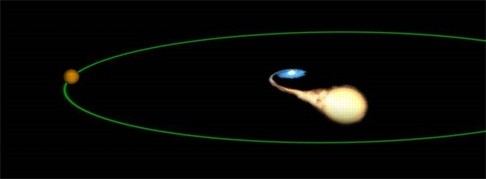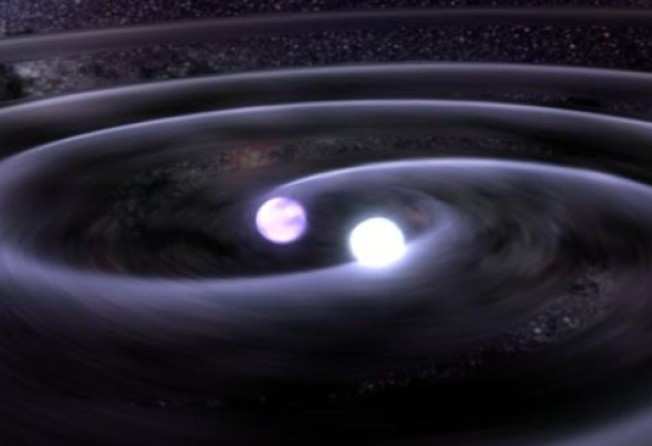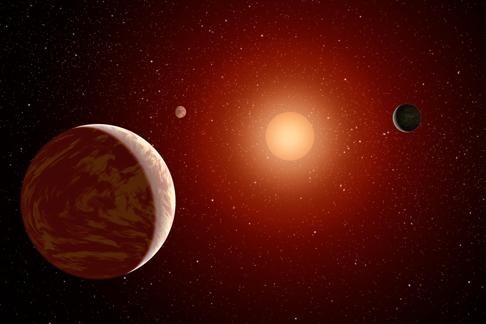
Lonely planet: Sole survivor of stellar apocalypse in distant solar system shocks scientists, but earth still probably doomed
Chinese scientists surprised to find star still hanging on near a white dwarf - an imploded corollary of our sun - suggesting that life can exist in parts of the universe where this was previously deemed impossible. But as it is much further away from its sun than we are to ours, earth’s expected fate remains the same.

Chinese astronomers have discovered the first planet known to have survived the violent death of a sun-like star, and this could help paint a clearer picture of what the earth and our solar system may look like in five billion years’ time.
In the past, nobody expected to see planets still in close orbit to a dying star, also known as a white dwarf.
As a star nears the end of its life, its hydrogen fuel stores become depleted and it puffs up to the size of a red giant some 200 times its original size. In the process, it swallows up nearby planets or shreds them with violent beams.
The red giant then collapses due to strong gravitational pull and ends up as a white dwarf - an extremely dense remnant of its former self with a mass equivalent to that of the sun, while the star itself shrinks to about the size of the earth.
The planet being studied by the Chinese team was found near a white dwarf in a binary star system in the Ophiuchus constellation, according to their paper published in this month’s edition of the Astrophysical Journal.
The planet has over seven times the mass of Jupiter and is at least 300 light years from the earth.
Working with astronomers in Argentina, the Chinese team analysed seven years’ worth of data to confirm its existence. They looked at variations of light caused by its orbit, including its passage into the binary star system known as Dwarf Nova V2051.
“We’re as excited as those marine biologists who discover life at the mouth of a volcano on the seabed,” said Professor Qian Shengbang, lead scientist of the study who works at the Chinese Academy of Sciences’ Yunnan Observatories in southern China.
“There are extreme environments in the universe which have been considered impossible for the existence of planets, just like some areas on earth were considered [inadequate to accommodate] life,” he said.
“But our study shows that planets may be tougher and more adaptable than we thought. If they can be found near a white dwarf, they can be found almost anywhere in the universe.”
If an astronaut was able to directly view the planet from space, they would see a spectacular view, according to the researchers.
The white dwarf that lies near it is accompanied by a red dwarf - a smaller star emitting red light due to its low temperature. This formed an enormous disk around the former as it attracted substances from the red dwarf using its enormous gravitational pull.
As such, if anyone were to stand on the planet, they would see two suns in the sky at the same time - one red and the other white - and the pair would be linked by a breathtaking “interstellar handshake” of dust and gas, according to Qian.
No signs of life have been detected on the planet and none are expected, the team said.
The distance between the planet and the white dwarf is over seven times that of the earth from the sun.
Moreover, the disk around the white dwarf would emit a blinding glare several times a year as its orbit comes into contact with that of the dying star at its centre, an encounter that would generate enough radiation to kill most if not all living species, pundits say.
“We are talking about a lifeless, gigantic planet which is cold and dark, but which regularly gets a bright purple sky overhead as it is fried and toasted by deadly cosmic beams several times a year,” Qian said.
The Chinese team was unable to calculate the planet’s size, the speed at which it spins on its axis, or the materials of which it is composed, leaving many questions unanswered.
They said some of these problems were created because the white dwarf generated lots of interference that prohibits direct observation of the planet using ground-based telescopes.
The researchers are now conducting further research on the binary star system to find out whether the red and white dwarfs used to be part of a single star.
Various theories have been put forth as to whether our earth will survive the death of the sun, which is widely expected to turn into a red giant within the next five billion years. Some believe the earth will be burnt to a crisp before the sun goes through its anticipated death throes.
Other studies claim that our entire solar system will be destroyed when that happens, with more distant planets like Uranus and Neptune being pushed out of their original orbits and bound for a runaway journey with no return.
But the Chinese study offered some relief as it also found that the planet under scrutiny had been saved from total destruction. There were other indications to suggest that when the same fate befalls our solar system, more distant planets may survive the death of the sun, Qian said.
Yet it might not be prudent to draw too many parallels as a number of differences and uncertainties remain.
For example, there is no red dwarf in our current solar system that could go on to form a binary star system.
